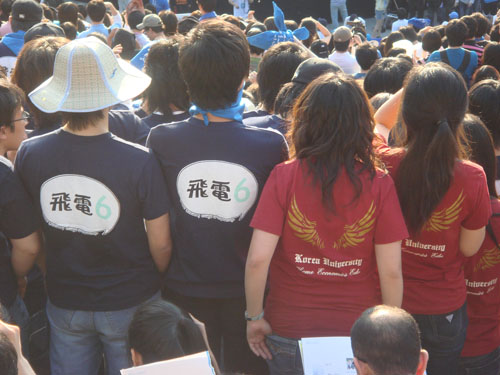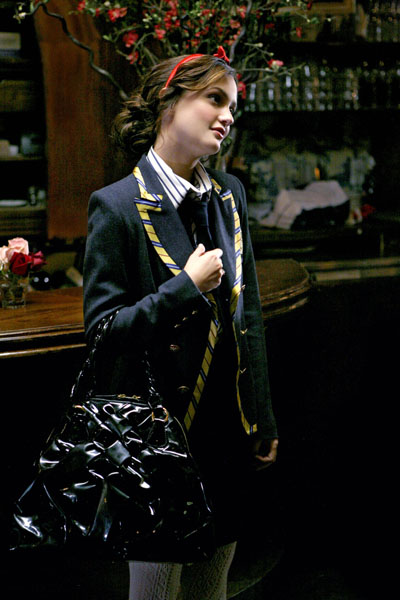Yonseians’ thoughts and behaviors regarding fashion

NAKED TRUTH - one cannot deny the enormous importance of fashion in the lives of university students in Korea. Their college years might be the only time for most of them to dress the way they want, after years of dull, lifeless school uniforms, and before a seemingly endless lifetime in suffocating suits as full-fledged members of society. The Yonsei Annals undressed the thoughts and reality of 1,458 Yonseians to unveil their fashion consciousness.
Fashion awareness
With as much interest and respect for fashion as there is today, fashion in life cannot be undervalued - especially in the lives of university students in their early or mid-twenties. Clothing is a necessity for living, but not merely a necessity to cover one’s body. In the article “Clothes Make the Person,” published in Psychology Today, social psychologist Leonard Bickman argued that clothes provide the symbols of one’s social status, occupation, and the intentions that the person carries. According to his experiment, people closely observe a person’s gender, age, race, and physical features based on the clothes that he or she wears.
Clothes these days are for fashion, for the expression of one’s ideal self-image, as 86.60% of Yonseians agreed. Koh Ae-ran (Prof., Dept. of Clothing & Textiles,
By expressing themselves through their ideal image, most Yonseians are aware of fashion and its role. On a scale from one to five, where one represents barely aware and five represents very aware, 19.65% rated themselves as five, 32.75% as four and 38.28%, as three. This proves that most Yonseians are more or less conscious of fashion, as anyone would expect. Can one assume that it takes them hours in front of the mirror to pick out a perfect outfit? Not so fast, since most students take less than half an hour every morning to get dressed. Yet, some Yonseians confessed that dressing up takes around 30 minutes or more if they can manage the time. “I change my outfit several times if I can, because even after I think I’m ready, I keep having second thoughts,” says Noh Hee-sun (Soph.,

Shopping for image
Lately, the term “shopaholic” has become popular among young people. Referring to those who enjoy shopping (mostly for fashion items) almost to the extent of addiction, the term describes a modern society in which people form their image and fulfill their desires through consumer activities. As the majority of university students rely on fashion to present themselves in their ideal image, this would mean that shopping for clothes and fashion items enables them to purchase their image. Through shopping, they synchronize themselves with their role models, and adopt their ideal image as their own.
The shopping trends of Yonseians show that most of them are moderate shoppers, purchasing new clothes at each season’s change (28.74%) and during bargain sales (13.48%). Yet, 44.56% proudly shop for clothes that they like whenever they find them. In fact, although a small number (6.39%), there exist Yonseians who spend over 50% of their allowance on fashion. Can these people be called shopaholics? Shopping excessively can lead to wasting money and clothes, because trends change quickly and clothes will soon be out of fashion. Even so, following the latest trends has its benefits, as long as it is kept under control. Koh explains, “Through active fashion consumer behavior and dressing up, university students not only express themselves to others but also acquire self-perception. Following the current fashion trends is a way that people feel group identity, through identifying themselves with others in the group.”
Figures in the survey results show that there are not many Yonseians who devote their heart and money to shopping, since only 6.39% spend over half of their usual allowance on fashion. In specific monetary terms, 54.40% spend less than 100,000 won per month. This is a surprising result, considering the ridiculously high prices of clothes these days. A considerable number of Yonseians do claim that they are often stressed because of their economic limits on shopping however. A respondent complained, “No matter how much I shop, my wardrobe always seems to have nothing that I can wear.” Many Yonseians would agree that they have the budget of a student but the desire for the wardrobe of a fashionista.
Style reports
One’s style represents one’s life, philosophy, and personality. Among the many aspects that come together to create a style, fashion plays a major role. It would not be an exaggeration to say that fashion style is the most important aspect in one’s external expression, and often the key to one’s first impression on others. “Fashion style tells others about yourself, so it is good to dress according to your personality. You should wear clothes that look good on you and that you can easily wear. With your unique individuality on top of that, your own style is complete,” Seo Jeong-eun (Fashion Stylist, Agent de Betti) advises.
If one was to look upon the fashion styles of Yonseians, one would find that most of them are casual dressers, as 50.00% defined their style. Meanwhile, 15.24% defined their style as mix-and-match or layered. Both styles suggest the carefree and relatively relaxed nature of fashion among university students. According to Seo, dressing in regard to T.P.O (time, place, and occasion) is important, and Yonseians appear to be following this guideline. Since Yonseians spend most of their time at school attending classes, it is best that they are dressed in suitable attire for daytime classes, and casual clothes appear appropriate.
When creating one’s own fashion style, each person has his or her priority. For 63.16%, it is important that the clothes suit them well. On the other hand, for 26.11%, it is important that each fashion item matches up with every other to create harmony. It seems that Yonseians are most concerned with how well the clothes look on themselves, not the clothes alone. This standard is also applied when evaluating others’ fashion, as most Yonseians hate seeing people with clothes that do not suit them.

Standards of beauty and gender roles
In the fashion preferences of Yonseians, traces of social norms in Korean society can inevitably be seen. According to Koh, specific trends or preferences of the public reflect the spirit of the times. Although sexual discrimination has been decreasing steadily for several decades in
When asked what kind of style they hate to see on the opposite sex, female respondents listed long tops, skinny jeans and earrings on boys. Interestingly, all of those items are equally popular in both sexes these days; yet, girls do not like to share those styles with boys. As men started to care about their appearance and beauty, metrosexuals seemed to be widespread and openly accepted. However, it appears that girls still hold certain traditional expectations of how guys should dress – different from the girls, please. On the other hand, male students mostly have a distaste for girls with miniskirts, unless their legs are slender. This is a rather modern standard of beauty; pursuing slim body figures. What is interesting is that this perspective is not confined to boys, but shared by girls themselves, too. Although this may be a prejudice, this is rather a prevalent social norm in Korean society. Of the 25.96% of girls who do not wear skirts, most of them prefer pants because they lack confidence in their lower body. A female respondent in the survey complained, “My legs are too thick compared to my upper body, so my body looks unbalanced.”
Other than the strong frames of gender roles and modern beauty, the social norms of Korean society are unique in several ways. Among the list of Yonseians’ responses to unbearable styles, frequent responses were “overly comfortable clothes,” “tight, short or exposed clothes,” and “piercings in spots other than ears.” All of these styles could be regarded as perfectly normal and not at all unattractive in other countries.
In fact, foreigners have different standards in fashion. Choi Rina (Soph.,
Going with or against the flow
Although keeping up with the latest trend offers many benefits, it is not always viewed as desirable. Especially in the field of fashion, where trends change all the time, trying hard to keep up with the latest trend in disregard of one’s individuality is criticized by many. Nothing much can be said when only a mere 0.68% of Yonseians think that following the latest fashion is most important in getting dressed.
Then how can we explain the innumerable identical fashion items and styles that we encounter each day? Choi Sun-hyung (Prof., Dept. of Clothing & Textile,
* * *
Fashion is one of the various media through which we can steal a glance at the society of our time. The way we dress is directly related to how we see each other and communicate through our styles, the most powerful nonverbal symbolism of external expression. Again, fashion is a way of communicating with others, not merely of judging them. Take someone’s fashion style and digest it as that person’s own way of expression, and “never judge a book by its cover.”
To some, the field of fashion may appear unfamiliar and irrelevant, unless they are aiming to work in the fashion industry. Yet, fashion is not something that an average Yonseian should feel distant from. Fashion is in every aspect of our lives, from matching the top and the bottom, making sure the colors do not clash, to expressing ourselves and communicating with society and its members. A fashionable life does not have to be anything grand; with relationships built from successful expression and communication through fashion, a life is anything but unfashionable.
Style dictionary 

Preppy

